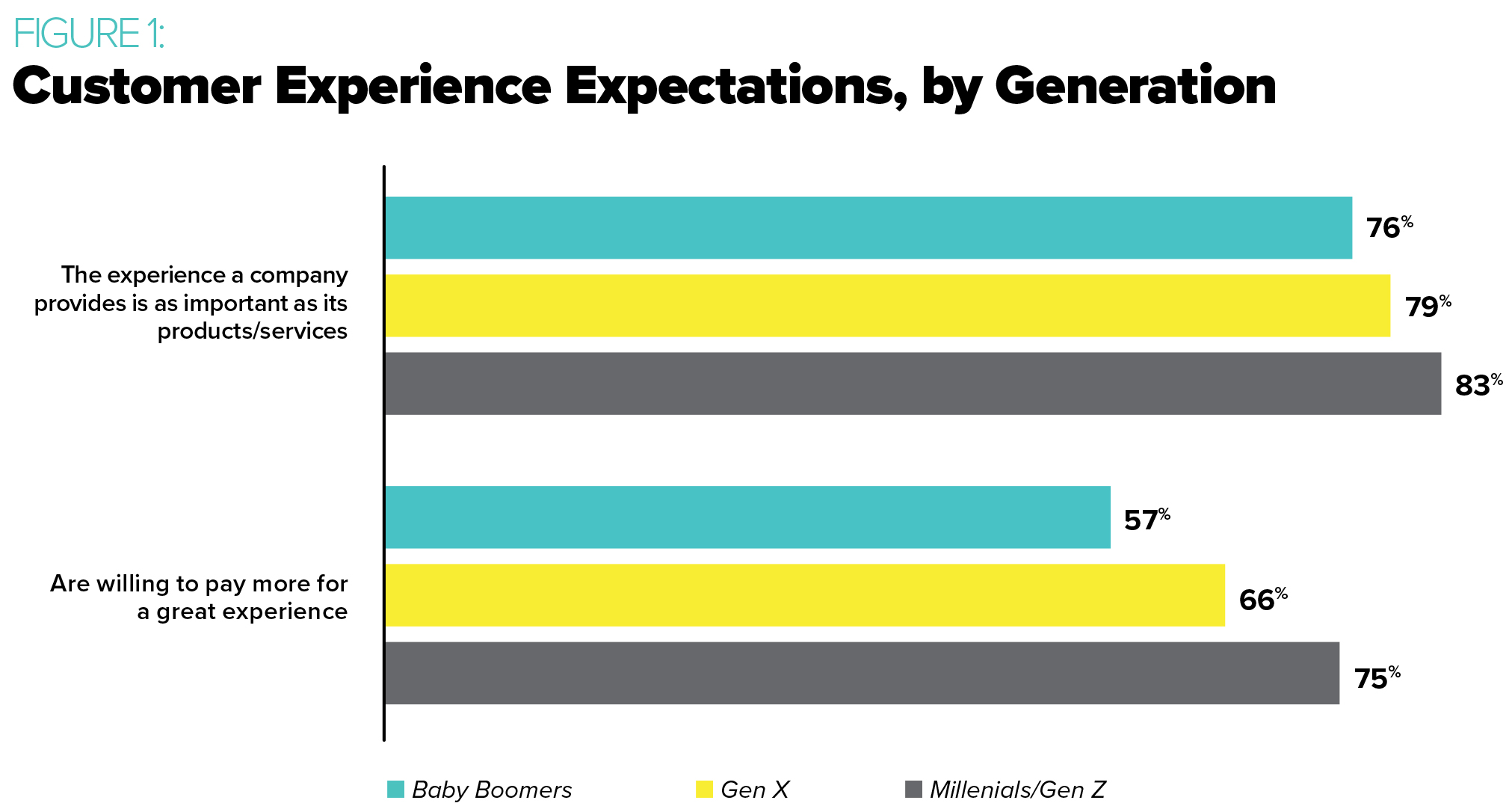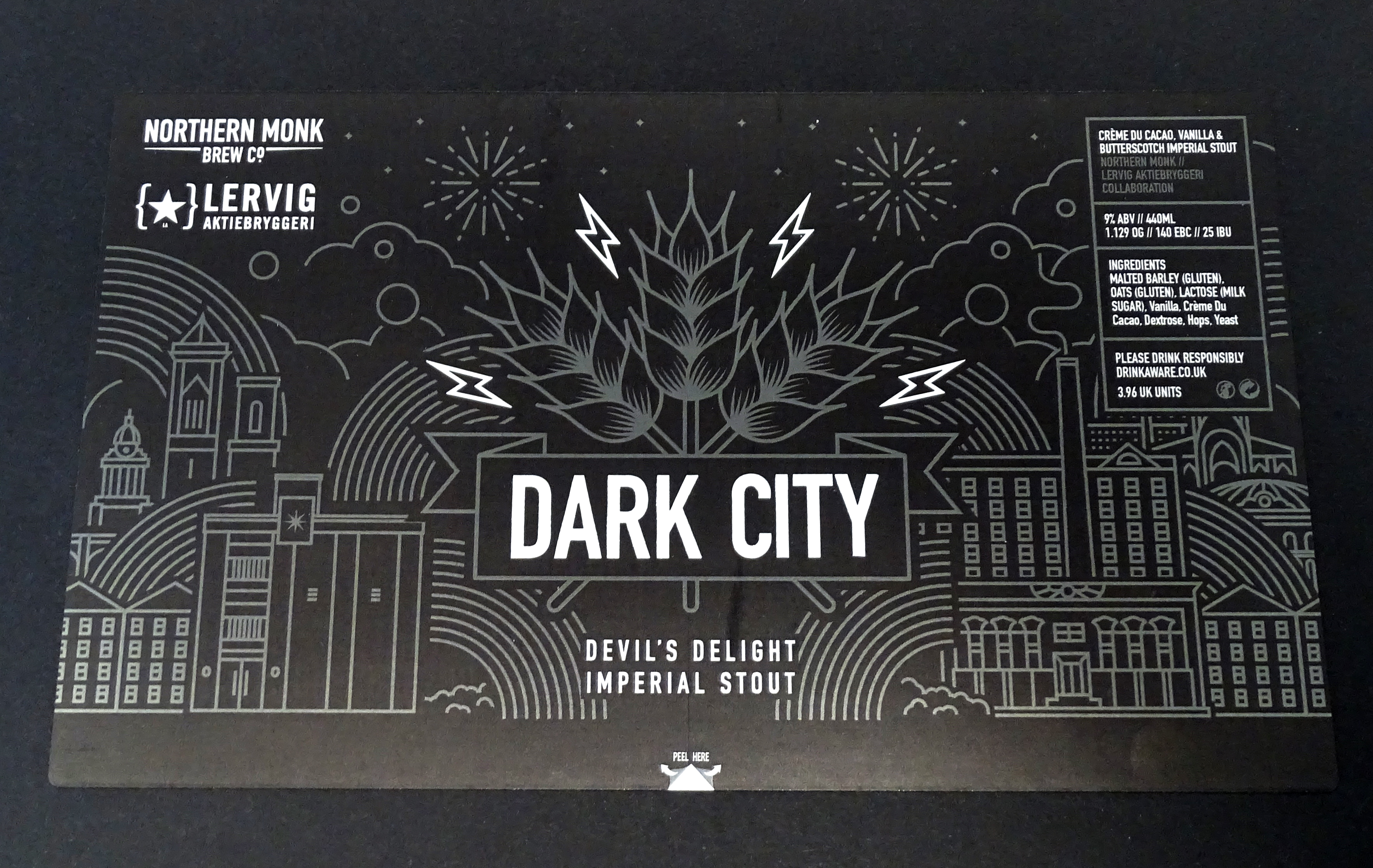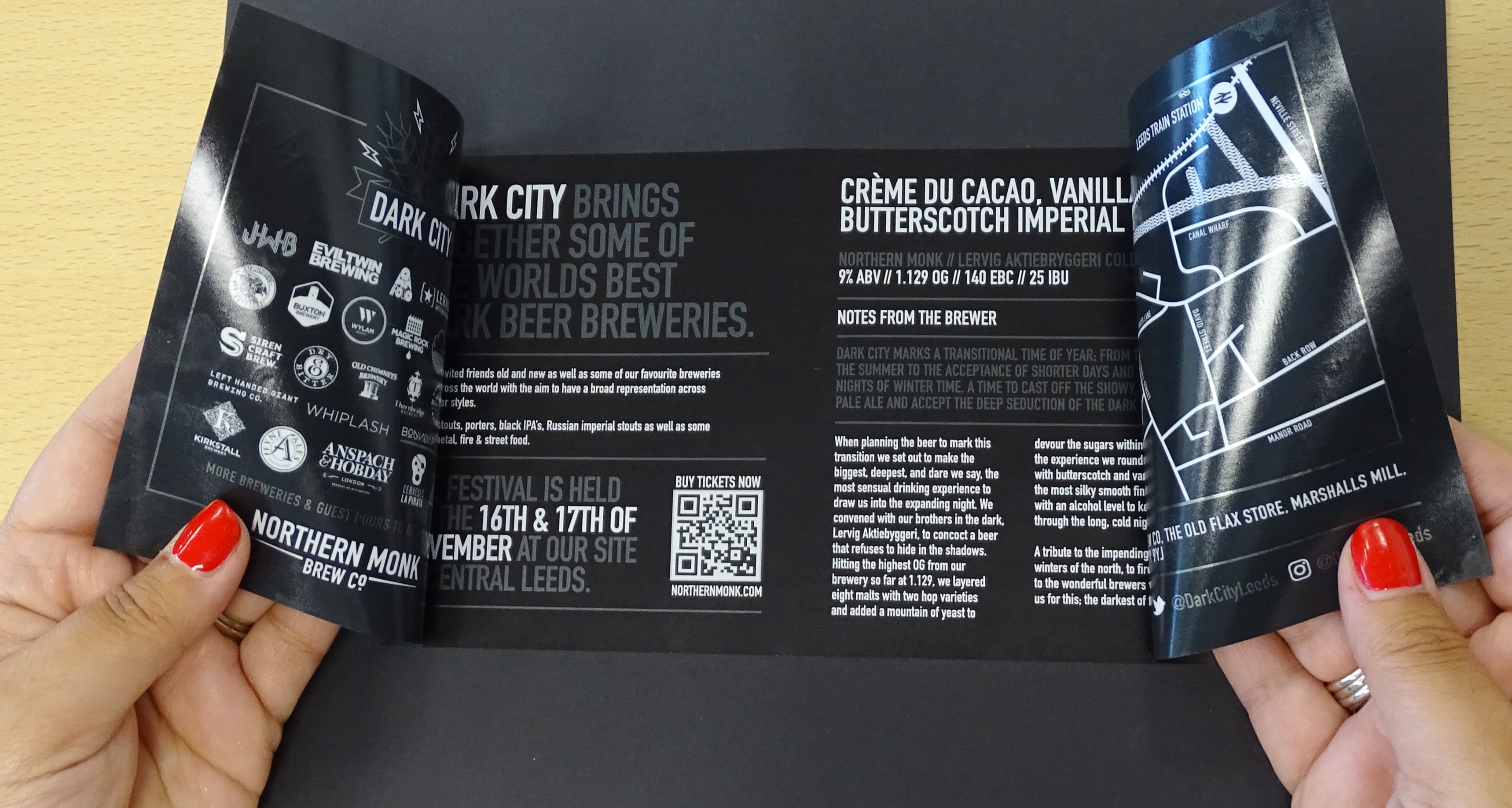How a Brand Experience Unfolds for Northern Monk Brewery’s Audience
How a Brand Experience Unfolds for Northern Monk Brewery’s Audience
In a hypercompetitive market, digitally printed peel and reveal labels help a U.K. brewery enhance the customer experience
In the early 2010s, the British beer scene was looking a bit ... American. Beer lover Russell Bisset noticed that American-inspired craft beers were very popular in the U.K., and decided it was time to bring some national pride to the market. “I felt like there was a real opportunity for someone to take that ‘best of British’ heritage and tradition and combine it with the kind of progressive, forward-thinking approach to branding, packaging, and ingredients that was coming over from the U.S,” says Bisset. “And that’s what we did.”
With £5,000 passed down from one of Bisset’s grandparents — about $7,800 at the time — Northern Monk Brew Co. opened its doors in Leeds, England, in 2013.
At the time the brewery opened, the competition was already stifling, and it only got worse over the years. In 2010, there were 1,072 breweries in the U.K. By 2015, a new brewery was opening in Britain every other day. In 2016, the number of breweries topped 2,000. Now, that glut has started taking its toll on the industry: Growth in the number of breweries in the U.K. fell 15% from 2016 to 2017.
Bisset has a background in global sales, and he knew that in order to stand out from the crush of competition, Northern Monk would need to develop beer can labels that would resonate with its target market of young professionals. The year the brewery opened — on the recommendation of a friend — Bisset turned to CS Labels in Wolverhampton, West Midlands, to create Northern Monk’s beer can labels. Ever since then, Bisset and Northern Monk have worked with the printer to develop revolutionary labels that have won industry awards and boosted brand awareness about the brewery.
CS Labels specialize in digital labels, including multi-layer ones. The company also originally offered flexographic printing, but, says CS Labels Operations Director Adam James, “When I started in 2009, there weren’t a lot of good flexo printers.” They abandoned the flexo printer and since then, have purchased 10 digital printers, with five onsite.
Many printing companies have a crossover point where if a job requires less than 2,000 meters of material, they’ll use digital printing; and if it requires more, they’ll use flexo. But when CS Labels eliminated the flexo option, the company had to get creative — and the constraint led it to more and better options for its customers.
“Even if in theory it wasn’t a digital job, we could say to a customer, for example, ‘We’ll make your labels more seasonal. There’s no plate cost, there are no origination costs. So, if you want to do a limited edition run in the middle of your normal cycle of that product, why not? It’s just a bit of artwork.’ And that’s how we sell digital.”
Curiously, though, while CS Labels prints labels for craft beer and cider, the company doesn’t work with other beverages, like sodas — or even mass-produced beer. “Even our single-layer labels are high-end,” explains James. “So if a larger brewery [with a higher output] came to us for labels, they would probably find us too expensive for the price point they need ... whereas, the smaller breweries are more open to the ideas to get that ‘wow’ look when the product is on the shelf.”
Northern Monk’s peel and reveal labels allows the brewer to share additional artwork and stories, enhancing the brand experience for the customer.
YOUNG PROFESSIONALS WANT EXPERIENCES, NOT THINGS
Northern Monk’s target market is 25-to-34-year-old professionals, predominantly males. This age group fits squarely into the Millennial generation — and if there’s one thing marketers know about members of this generation, it’s that they value experiences over things. Instead of cars and fancy watches, when they splurge it’s on scooter tours and rock shows (which they take an Uber to, of course).
Beer straddles the line between “thing” and “experience.” It’s a physical object, yet people enjoy the experience of drinking it. What could Northern Monk do to increase the experience value of its products and tap into that audience of stuff-shunning Millennials in a tough marketplace?
Part of the answer for Northern Monk was to position its beers as premium products for an upscale market, with prices as high as £10 or £11 ($12.50 - $13.75) per can for some products. “There are times when you want a barbecue beer, something that’s not complicated, and that’s more accessible in terms of price,” says Bisset. “But there are also times when you want something you can totally immerse yourself in. That’s really the end of the market we focus on.”
Another way Northern Monk creates experiences for its customers is by hosting festivals and other events that showcase local brands. For example, the brewery’s Don’t Mess With Yorkshire Day celebrated “God’s Own Country” and featured live performances from local bands.
An even bigger key to bolstering the customer experience was to focus on sharing the brand’s story. Fifty-five percent of British adults surveyed say they’ll buy a product in the future if they like the brand’s story, and 15% say they’ll buy the product immediately. The food science company DSM reports that over 45% of 18-to-30-year-olds who were surveyed strongly agreed that “the beer they drink says a lot about them,” and adds that beer companies’ stories and purpose are becoming more and more important.
The brand story ties back into the experience of buying and drinking a beer: You’re not just purchasing a product — you’re reinforcing your self-image, and feeling good about supporting a company with a mission you believe in. The problem is, it’s difficult to convey a compelling story on a small space like a can label, especially when breweries have to include information like ingredients lists and government warnings, as well.

Millennials and Gen Zers think customer experience is just as important as a brand’s products or services, and are willing to pay for the experience. Source: Salesforce
NECESSITY BREEDS A NEW KIND OF EXPERIENTIAL BEER LABEL
The solution was found in an unlikely industry. “CS Labels mentioned that they were doing quite a lot of peel and reveal labels for the pharmaceutical industry,” says Bisset. “We asked, ‘Is there any reason why we couldn’t do that across a full can?’ They looked at it and decided it was possible.”
Peel and reveal labels are labels with multiple pages that are glued together in a way that the customer can peel the top layer back to reveal more information on the inside; you’ve probably seen these on products like over-the-counter painkillers or cough medicine. James says the exact process CS Labels uses to make peel and reveal labels is a trade secret. But he shares, “It’s all about how we bring the pieces together and in what order, and other extra bits that we put in to enable it to stop peeling back just where I want it to, or to allow it to open in a different area.”
That latter point also allowed CS Labels to create barn-door style labels for Northern Monk, where the labels open from the middle to reveal four panels inside. The brewery used this style of label on a limited-edition beer to celebrate the Hop City festival, the U.K.’s first hop-led beer festival.
These labels are not easy to produce. For example, it’s critical to get the rolls of substrate lined up correctly, otherwise the inside pages will be out of register. CS Labels also continually tweaks other parts of the process to boost the quality of the labels — not just for Northern Monk, but for other customers, as well.
“Just three or four months ago, we changed another process internally and purchased more equipment to make the process more streamlined, and to ensure that we get the same quality run after run,” says James. “The last thing I want to do is to send Northern Monk a batch of labels they cannot use.” Not that it hasn’t happened. Says James, “Don’t get me wrong, we do make mistakes. But how we respond to those issues is what’s created the relationship between our two businesses.”
Given the craft beer-drinking market’s craving for stories, the brand’s premium prices, and the fact that beer labels trigger 60% of 18-to-30-year-olds to make a purchase, it made sense for Northern Monk to invest in premium labels.
Northern Monk was the first brewery in the U.K. to use peel and reveal labels by about 18 months, says James, and this gave it a leg up on the competition. Northern Monk had to adjust the canning line to adjust for the application of the new style of labels, but Bisset reports that the process was fairly straightforward.
“… our single-layer labels are high-end. So if a larger brewery [with a higher output] came to us for labels, they would probably find us too expensive for the price point they need ... whereas, the smaller breweries are more open to the ideas to get that ‘wow’ look when the product is on the shelf.”
Adam James
Operations Director,
CS Labels

FOCUSING ON DELIVERING A BRAND EXPERIENCE THROUGH LABELS LEADS TO BIGGER IDEAS
Northern Monk kept its original cans, where information and images are printed directly onto the aluminum, for its Core products — beers that are continually in production, like its Heathen IPA and Faith Modern Pale Ale — and took advantage of the peel and reveal labels for its premium, limited-edition products. The brewery used the additional space to offer content that gives customers a fun or unusual experience, while showing what the brand is all about. For example, one beer’s label offered survival tips (did you know you can use a beer can’s pull tab as a fishhook?), while another label for a premium beer included a Spotify link to a free download of a song by a heavy metal band.
An idea to hone the brand’s story even further struck Bisset in 2015, when he was working with portrait photographer Tom Joy. “We were looking at how we could expand the medium of photography and beer together,” he says. “Craft beer and cutting-edge photography go really well together in coffee table culture — they’re all things that you can really sit with and contemplate.” So Northern Monk partnered with coffee roasters who were producing interesting grinds to create a series of five coffee-flavored beers, each with a label featuring an arresting photograph from Joy.
This was the beginning of Northern Monk’s Patrons Projects, where the brewery partners with artists, athletes, creatives, and more to create collaborations that reflect the scene in Northern U.K. Bisset says the word that best reflects the style of the north is “courage.” “A lot of the money’s in London,” he explains. “For northern businesses, it’s more difficult. The conditions are harder, and that’s even reflected in the weather conditions. In the U.K., there’s a sense of David vs. Goliath in the North vs. the South.”


Northern Monk’s peel and reveal labels can also open up, barn door-style, revealing four panels full of information.
Since then, the brewery has created 20 series in its Patrons Project, each of which contains seven different beers; and, so far, has brewed about 660,000 liters of Patrons Project beers. Each beer is brewed for only a short period of time and features limited-edition artwork on the front of the peel and reveal label. On the inside of the label, customers can read about the artist and the collaboration. “We’re using the labels as a canvas to tell the stories of these incredible people we work with; whether it’s at the brewery, or creatives we want to champion,” says Bisset.
Northern Monk has collaborated with rock bands, street artists, and even athletes like skateboarders for the various Patrons Project series. One striking label in Series 3 by tattoo artist James Butler features an ornamental, black-and-white illustration, titled “Attack on Blue Falcon,” of a kraken wearing a diving helmet. The inside left page shares the story of how Butler dropped out of his fine arts course at university to start his tattoo career, and discusses how Butler uses only black ink to create art that plays with negative space, solid black, dots, and lines. On the inside right page, readers are treated to details on how the brewers developed the beer’s flavor profile.
Sometimes, Northern Monk reaches out to an artist it would like to feature; and other times, the artists come knocking. A notable example of an artist who approached the brewery is INSA, a street artist from Leeds who’s worked with brands like Netflix, Nike, and G-SHOCK watches.
Northern Monk trusted in CS Labels to decide how to produce these labels, and the printing company did not disappoint. James experimented with laying down 500% toner — 100% of each of the four colors, plus white — for a raised, tactile effect. “I didn’t tell Russell I was doing it,” he says. “I just went ahead and did it. It’s nice to have that trust in the relationship.”
“We’re using the labels as a canvas to tell the stories of these incredible people we work with; whether it’s at the brewery, or creatives we want to champion.”
Russell Bisset
Founder/Managing Director,
Northern Monk Brew Co.

EXPERIENTIAL LABELS DRIVE BRAND AWARENESS AND WIN AWARDS
CS Labels, of course, has benefited from the innovative labels it’s created for Northern Monk. “Probably 45% of the awards we’ve won over the years have been for Northern Monk labels,” says James. In 2016, for example, the company’s peel and reveal labels won “Best Labels and Packaging” at the FlexoTech Awards.
But you can win all the awards in the world, and it won’t matter if the labels don’t boost awareness, establish your client as a creative leader in the marketplace, and help increase sales. “Our sales have grown roughly 100% year-on-year,” says Bisset. “Patrons Project [beers] are roughly 20% of our output. They tend to sell out before their full release, and are some of the most sought-after products in beer.”
In terms of brand awareness, Northern Monk boasts close to 46,000 followers on its Instagram account that features mostly images of its beer cans. More important is Northern Monk’s engagement rate on the social platform; which, according to the Phlanx Engagement Calculator, is 1.77%. By comparison, Budweiser’s engagement rate is just 0.45% (and Kim Kardashian’s is 1.32%).
This Patrons Project peel and reveal beer label was created to celebrate a street mural designed by Nomad Clan and Tank Petrol that Northern Monk funded in 2017.
As more proof that the brand’s awareness is high, the brewery has 493,146 ratings on the beer rating site Untappd, which is responsible for 10% of mentions for local breweries online. (Most other breweries on the site have well under 10,000 ratings.)
Perhaps the best indication that customers are responding to Northern Monk’s stories; and, by extension, its labels, is the fact that in March 2018, the brewery raised £1.5 million from over 2,000 investors in a crowdfunding campaign on Crowdcube. The brewery used the funds to rebrand its website, redesign its Core product labels, open a new Refectory site, and release new brews, such as gluten-free and low-alcohol beers.
Northern Monk now serves 22 countries around the world, and its success can be partly attributed to the brewery’s creative use of labels to stay true to its roots — even while growing into new markets. “We’re just constantly trying to innovate,” Bisset says. “That’s a really important piece for us.”





















